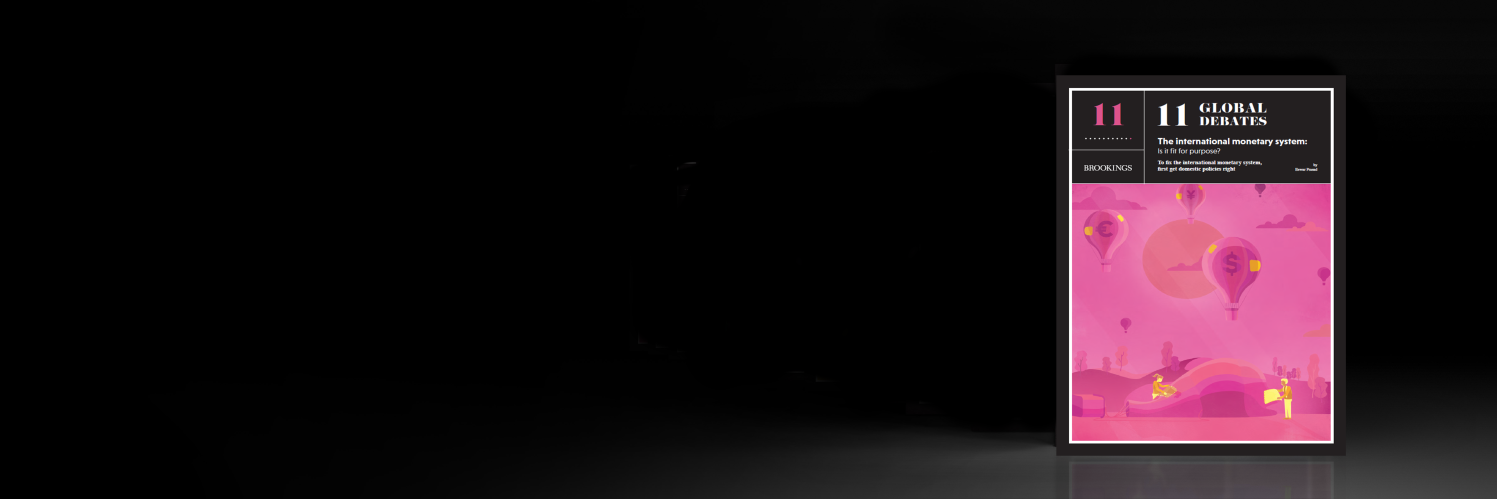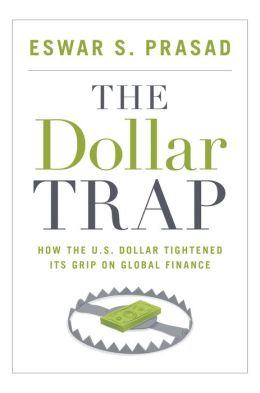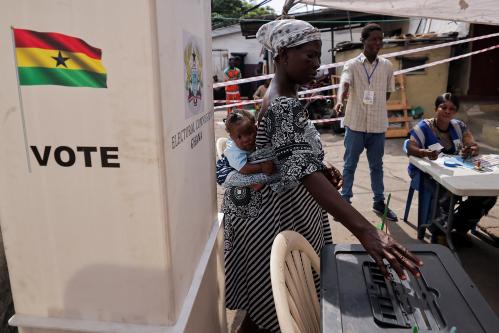This report is part of a series of essays by the Global Economy and Development program—a 10th anniversary edition. The series, available here, delves into the critical issues facing all those concerned about globalization. You can join the conversation on Twitter using #11GlobalDebates.
1.1 What’s the issue?
The key question concerning the international monetary system is whether it can function in a manner that promotes global economic and financial stability rather than become a source of instability in itself or a channel through which such instability becomes more pervasive.
Recent controversies have revolved around the roles of central banks, which have become key players in domestic and international policy arenas. With rising financial market integration and falling barriers to capital flows, actions of central banks—especially those of large economies—have effects beyond their national borders. Logically, therefore, central banks should pay heed to the effects of their policies on other countries.
FDI and portfolio equity now dominate the external liabilities of emerging markets.
1.2 What’s the Debate?
Indeed, calls for global monetary coordination are on the rise in the aftermath of the recent financial crisis and are a source of increasingly heated debate. While central bank policy coordination is a laudable proposition, however, it risks deflecting attention from a set of deep underlying policy problems and could set up a proxy battle that proves counterproductive.
Emerging markets rightly worry that monetary policy actions of central banks in advanced economies heighten capital flow volatility. This essay suggests a framework for dealing with the challenges that such volatility poses for emerging markets, although the analysis has broader implications for domestic policy coordination as well as for the international system.
In reality, capital flows to emerging markets tend to be procyclical.
In principle, capital flows should change over an economic cycle. If an economy is effectively sharing risk with the rest of the world, it should receive larger capital inflows in times of poor performance. When the economy rebounds, it should receive smaller inflows. In reality, capital flows to emerging markets tend to be procyclical, exacerbating domestic business cycles, rather than countercyclical.
In an ideal, frictionless world, capital flows would function in three ways. First, they would be relatively stable and help convey indirect benefits such as transfers of technological expertise, expertise in corporate governance, and deepening of financial markets. Second, capital flows would be driven mainly by macroeconomic fundamentals, such as output growth, productivity, and interest rates. Third, they should cushion domestic business cycle conditions. As noted earlier, this implies net inflows should be countercyclical. Fourth, capital flows would be mediated in a well-regulated way, both in terms of domestic and international financial markets. And fifth, from the perspective of emerging markets, the advanced economies would have relatively well-functioning policies and economies.
Measured against this set of criteria, there has been some progress over the past decade and a half. Foreign direct investment and portfolio equity now dominate the external liabilities of emerging markets in place of foreign currency external debt. This shift has meant more stable capital flows that have the right risk-sharing characteristics. Foreign investors share in both the return and currency risk on such investments. Portfolio equity inflows can be volatile, but do not typically create vulnerability to the sort of painful crises that emerging markets suffered in the past when they were dependent on debt.
However, that’s where the progress largely ends. Capital flows to emerging markets are still largely procyclical, driven more by short-term shifts in market sentiment than long-term macroeconomic fundamentals. These economies’ foreign currency external debt has recently begun to rise again. Additionally, advanced economy policies have become a source of risk rather than stability in the world economy.
1.3 What to watch out for?
What are reasonable policy solutions to close the gaps? First, it is necessary to reflect on what the sources of failures are relative to the benchmark.
One can characterize three types of shortcomings: market failures, policy failures, and institutional failures. The distinction among these is not clear-cut, but the coarse typology still has its uses.
Market failures can occur, for instance, when herding behavior occurs due to information asymmetries or because of perverse incentives faced by investment managers to take on excessive risk. There has been some progress in dealing with these issues through financial market regulation, although the work is far from complete.
Then there are policy failures. Undisciplined macroeconomic policies and inconsistent or ineffectual financial regulatory policies can heighten the risks associated with volatile capital flows. Measures that improve the benefit-cost tradeoff from capital flows include getting macroeconomic policies right and financial markets working better, both by encouraging financial market development and ensuring adequate regulatory capacity.
The third source of the discrepancy revolves around institutional failures, both domestic and international.
First, on the domestic front, the critical issue involves a mix of various policies. Most central bankers now face multiple, and indeed, expanding mandates. This constitutes a failure at the institutional level within countries. In advanced economies, in particular, governments continue to rely on the relatively easy crutch of monetary policies both to prevent financial meltdown and support growth. The balancing act faced by central bankers, difficult in the best of times, becomes even more so when other policies—fiscal and structural—are providing little support or even working at cross-purposes.
This is, in a sense, an institutional failure. It is not that monetary policy is getting it wrong, but that monetary policy is hemmed in by other policies. And this requires change at the institutional level, to get the mix of policies right.
It is not that monetary policy is getting it wrong, but that monetary policy is hemmed in by other policies.
The second aspect is the institutional framework at the international level. With increasing financial integration, policy measures by the advanced economies inevitably result in spillovers in emerging markets (and vice versa). There is at present no good governance mechanism to mediate the effects of such spillovers. Asking central banks to assume the additional mandate of considering the spillover effects of their policies seems logical, but would make an already delicate balancing act for these institutions even more complicated.
Ultimately there is little choice but to confront all of these inter-related failures, both in terms of thinking more formally about spillover effects and also about the governance structure of international institutions, whose legitimacy has to be rebuilt if they are to be effective at helping to solve collective action problems.
The lack of effective global governance has major implications for capital flows. Emerging markets feel the need to accumulate more reserves to secure a layer of protection from volatile capital flows. This is not a tenable situation, where the international institutional set-up leaves emerging markets with little recourse in terms of safety nets other than self-insurance through reserve accumulation.
Coordination of policies sounds good in theory but is complicated in practice. When national and international interests coincide, as happened in the midst of the financial crisis, coordination works well. Consider the 1985 Plaza Accord, when there was a happy coincidence of domestic and global interests. Even in cases where such accords succeeded in influencing currency values, they had little effect on the domestic policies of the concerned countries. Although most of the agreed-on policy commitments were in each nation’s own long-term interests, currency intervention proved easier than shifting domestic policies.
If central bankers wage proxy battles on behalf of their feckless political leaders, they risk damaging their hard-won credibility, independence, and effectiveness.
Rather than fulminating about other countries’ monetary policies and calling for coordination, national leaders ought to fix their own policies first. They should let their central banks get back to doing what they can do best, which is to deliver low inflation and financial stability. If central bankers wage proxy battles on behalf of their feckless political leaders, they risk damaging their hardwon credibility, independence, and effectiveness.
Before devising solutions, it is essential for policymakers to get a good grasp of the underlying mix between the three types of failures identified above. When the relevant failures are really domestic policy and institutional failures, they need to be confronted as such rather than as externally-induced problems. Ultimately, unless the mix of domestic policies and the structure of international governance are improved, both the domestic policy measures to deal with capital flow volatility as well as measures to improve the functioning of financial markets, while necessary, might end up being futile.
This essay draws on the author’s remarks at a BIS-Bank of Russia Conference held in Moscow in July 2013.
The Brookings Institution is committed to quality, independence, and impact.
We are supported by a diverse array of funders. In line with our values and policies, each Brookings publication represents the sole views of its author(s).






